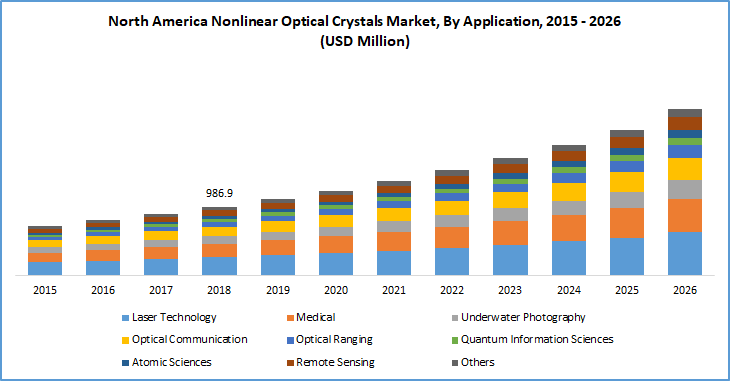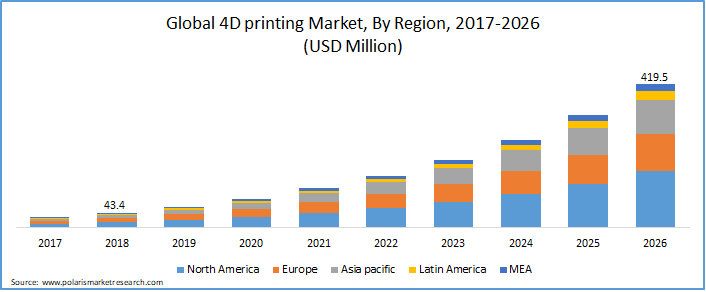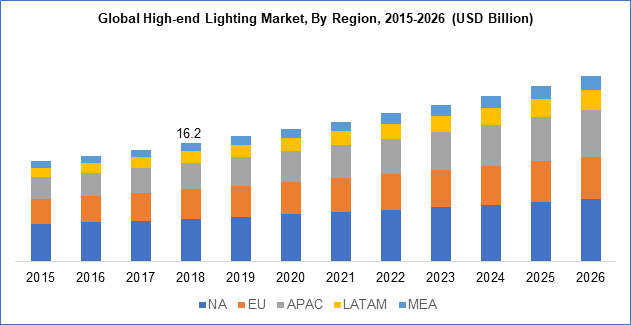New York City, 24 January 2020: The global Nonlinear Optical (NLO) Crystals Market size is expected to reach USD 7,766.4 million by 2026 according to a new study by Polaris Market Research.Nonlinear optics is the part of science that manages the collaboration of light with issue under conditions to such an extent that the direct superposition guideline is disregarded. Instances of nonlinear optical associations incorporate consonant age, whole and distinction recurrence age, the force reliance of the complex refractive record, light-by-light dissipating, and invigorated light dispersing. These procedures lead to applications including all-optical switching, optical power limiting, picture control, and picture preparing.
Insulating gems structure a significant class of second-request nonlinear optical materials. It is settled that solitary precious stones that come up short on a focal point of reversal evenness can have a nonvanishing second-request vulnerability. This prerequisite restrains the selection of precious stones to those of certain balance classes. An extra prerequisite on materials properties is set by the way that second-request nonlinear optical procedures can happen with great effectiveness just if a standard stage coordinating condition is fulfilled.
 |
| request for sample |
Albeit all materials should show this conduct, the proficiency of this procedure is commonly little and can’t be controlled remotely. Presently, accomplices of the Graphene Flagship venture in Cambridge (UK), Milan, and Genova (Italy) have shown just because that graphene demonstrates a decent optical reaction, yet in addition how to control the quality of this impact utilizing an electric field.
Looks into imagine the production of new graphene optical switches, which could likewise bridle new optical frequencies to transmit information alongside optical cables, expanding the measure of information that can be transmitted. At present, most business gadgets utilizing nonlinear optics are just utilized in spectroscopy. Graphene could make ready towards the creation of new gadgets for ultra-expansive transmission capacity applications.
Nevertheless, these are obviously delegate arrangements, intended to purchase time to recuperate high speculation costs inline innovation (principally burrowing), before at last taking off Fiber-to-the-Building or even Fiber-to-the-Home (FTTB/FTTH). This pattern for fixed-line administration is probably going to persevere for quite a while. Moore’s law will win for at any rate another five to seven years with regards to storage (it is less sure for processor speeds). And keeping in mind that development in screens may slow fairly, higher screen definition will proceed, to 8K and past, until we arrive at the farthest point of the human eye’s capacity. Normally, portable broadband improvement has pursued the patterns in fixed broadband, but with a postponement of a couple of years.
The application of Nonlinear Optical Crystals includes high cost owing to the high price of raw materials. It not only increases the cost of end-product but also discourages manufacturing companies to adopt the same. Despite Asia Pacific having cheapest workforce across the globe, the cost of end product ascends drastically. This in turn acts as a major restraint for the Nonlinear Optical Crystals Market.
Various nonlinear optical crystals techniques exist or are being produced for different zones going from maritime sensing of biological systems, gas air pockets, and submerged items to restorative sensing of the human body. The methodology is to utilize essential frequency occurrence waves to produce second-arrange nonlinear whole or contrast frequency handle that convey data about an article to be detected. Here we demonstrate that when all is said in done nonlinear sensing of an article, many confused and conceivably surprising systems can prompt total or distinction frequency fields.
China’s telecom segment proceeded with relentless development a year ago, with vigorous portable system benefits and improving web infrastructure. The segment’s income rose 3 percent year on year to 1.3 trillion yuan (in excess of 190 billion U.S. dollars) in 2018, as indicated by a report of the Ministry of Industry and Information Technology. Given vivacious improvement of interpersonal interaction applications, the extent of telephone call charges in the all-out telecom income dropped further to 13.7 percent a year ago from 17.9 percent in 2017. As a result, it is expected to have a positive impact on the market growth.
The key players in the market include Covesion, HC Photonics, AdvR, Red Optronics, Inrad Optics, Eskma Optics, among others.
Browse Full Research Report on "Nonlinear Optical (NLO) Crystals Market" @ https://www.polarismarketresearch.com/industry-analysis/nonlinear-optical-crystals-market


